Idea by
Ara González
estudio González arquitectos
http://www.gonzalezarquitectos.com
Call for ideas 2021
Villages of care
Villages of care
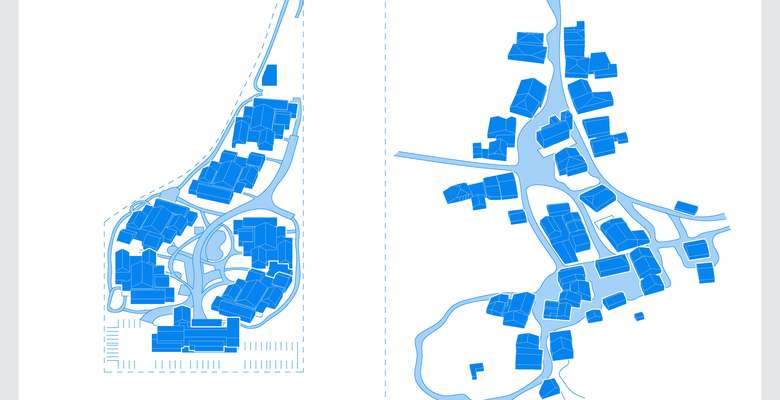
- Site-specific cases
The rural areas of Spain, known as the “emptied Spain”, is made up of small dispersed populations, with the potential for turning them into Care Villages for the elderly. These protective environments can serve to attract population by offering and receiving services.
On the other hand, in the last decade, a number of dementia villages have been built around the world, essentially nursing homes for people suffering from cognitive decline. These projects emulate the architecture of small towns and communities, where residents can live normal -but assisted- lives.
The idea is to make a translation from international to local, from dementia villages to depopulated villages. The first are understood as hyper-designed typologies, a catalogue of ideas and technological solutions which could be implemented into the second.
Care by design helps activate individual memory, while rehabilitating existing rural architecture can also activate collective memory.
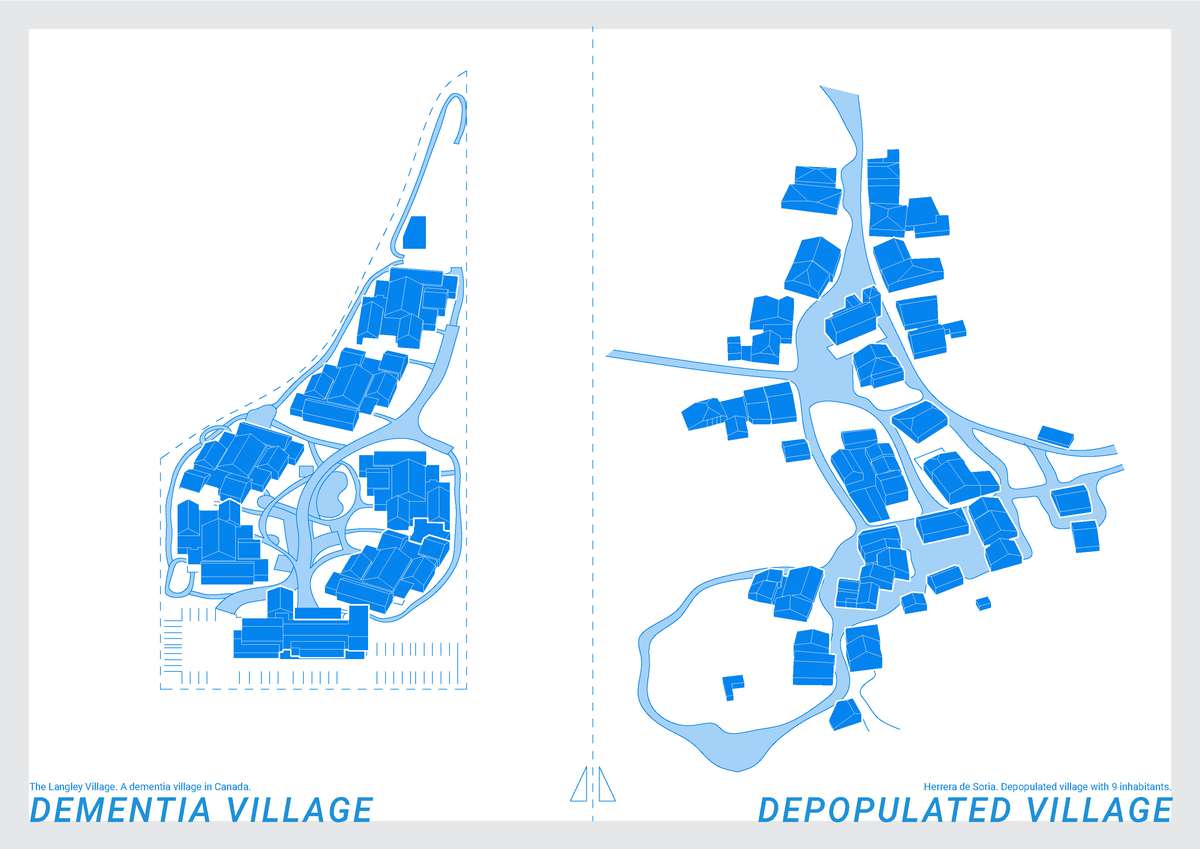
The Village Langley, a dementia village in Canada, is reflected in Herrera de Soria, a depopulated village in Emptied Spain, with a population of nine. It is at a point of irreversible depopulation.
The architecture of these areas is of great interest as the last vestiges of traditional vernacular architecture. The morphology which characterises dementia villages is already there -small groups of houses generate villas, where a limited number of elderly people could live with support.
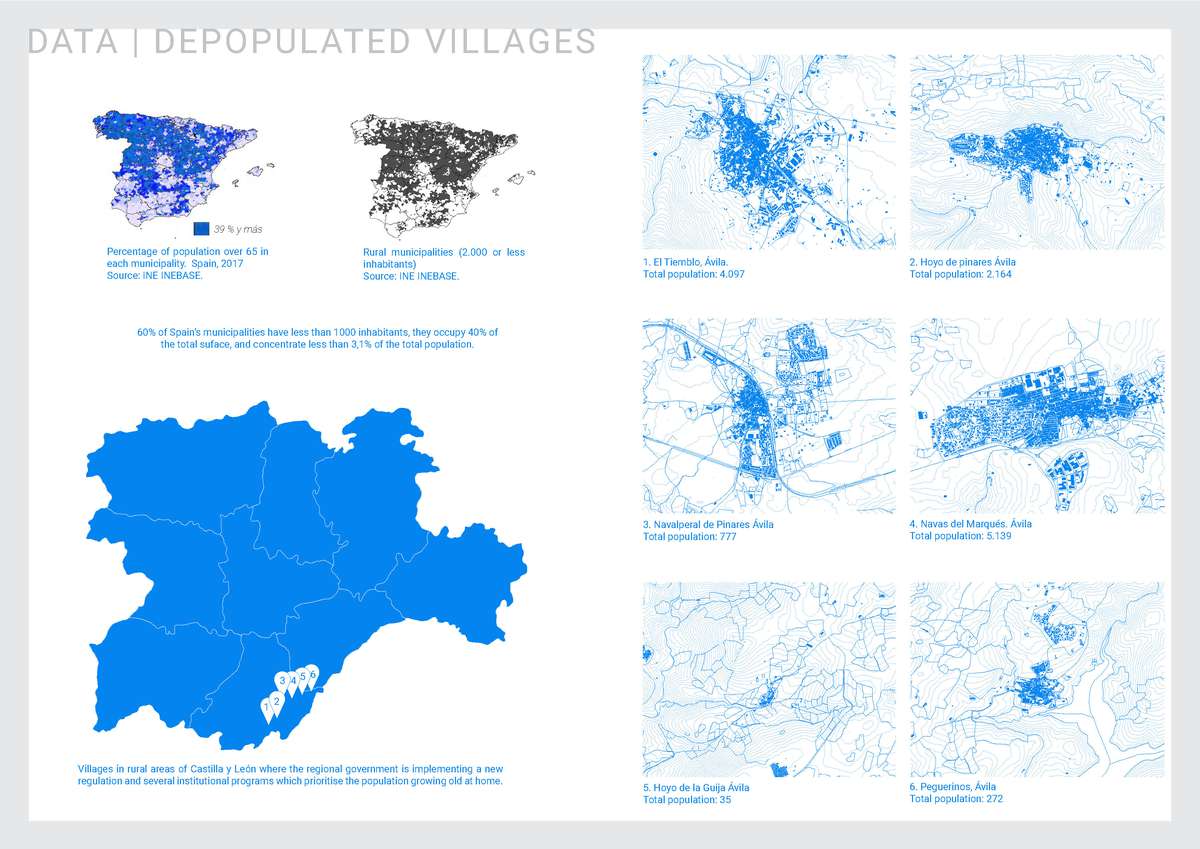
Data. In Spain, the map of depopulated areas, and the map of people over the age of 65 are one and the same.
This research project is centred in the Community of Castilla y León, which has the longest lifespan and oldest population in the country. The regional government is implementing a new regulation and several institutional programs which prioritise the population growing old at home.
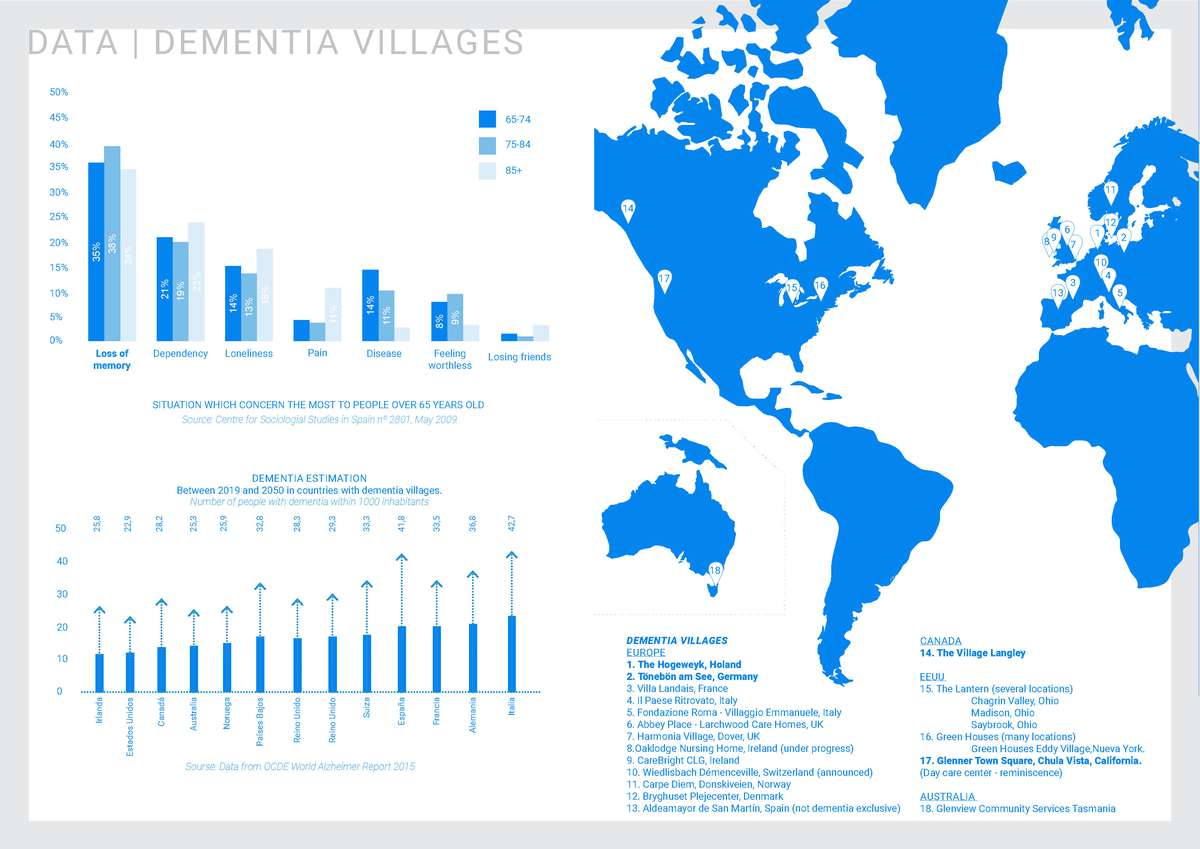
Data. According to the Centre for Sociological Studies in Spain, the loss of memory is the situation which is most concerning to people over 65 years of age. Moreover, the number of people suffering from dementia is growing every year, with a greater impact in those countries with a higher life expectancy. There are at least 13 dementia villages in Europe, and Green Houses in the United States share many characteristics with this new typology.
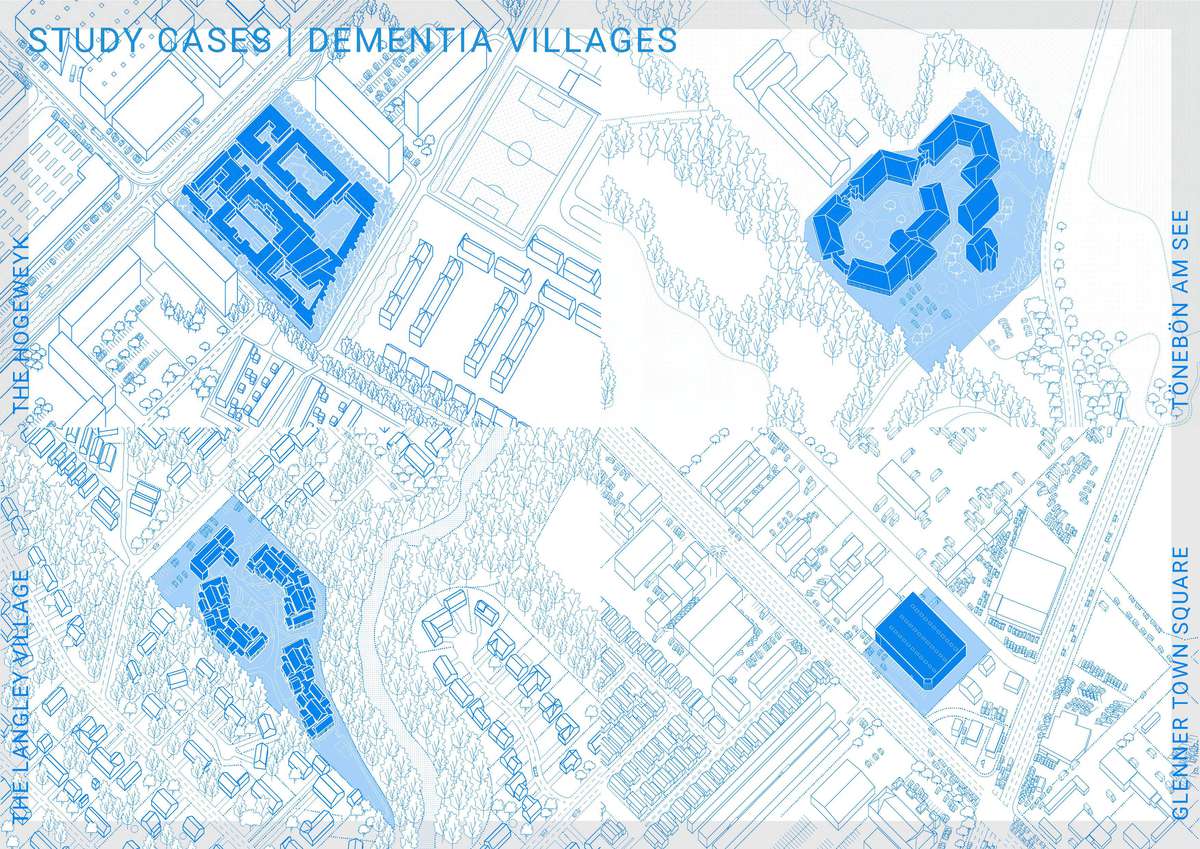
Several dementia villages have been analysed. The Hogeweyk in Holland is the first example of this new typology, which was followed by Tönebön am See, in Germany, or The Langley Village in Canada. On the other hand, the Glenner Alzheimer Centre in California emulates a small Town Square inside an industrial building. The architectural design of each of these projects arises moral questions around gated communities for the elderly and the different design responses according to cultural context.
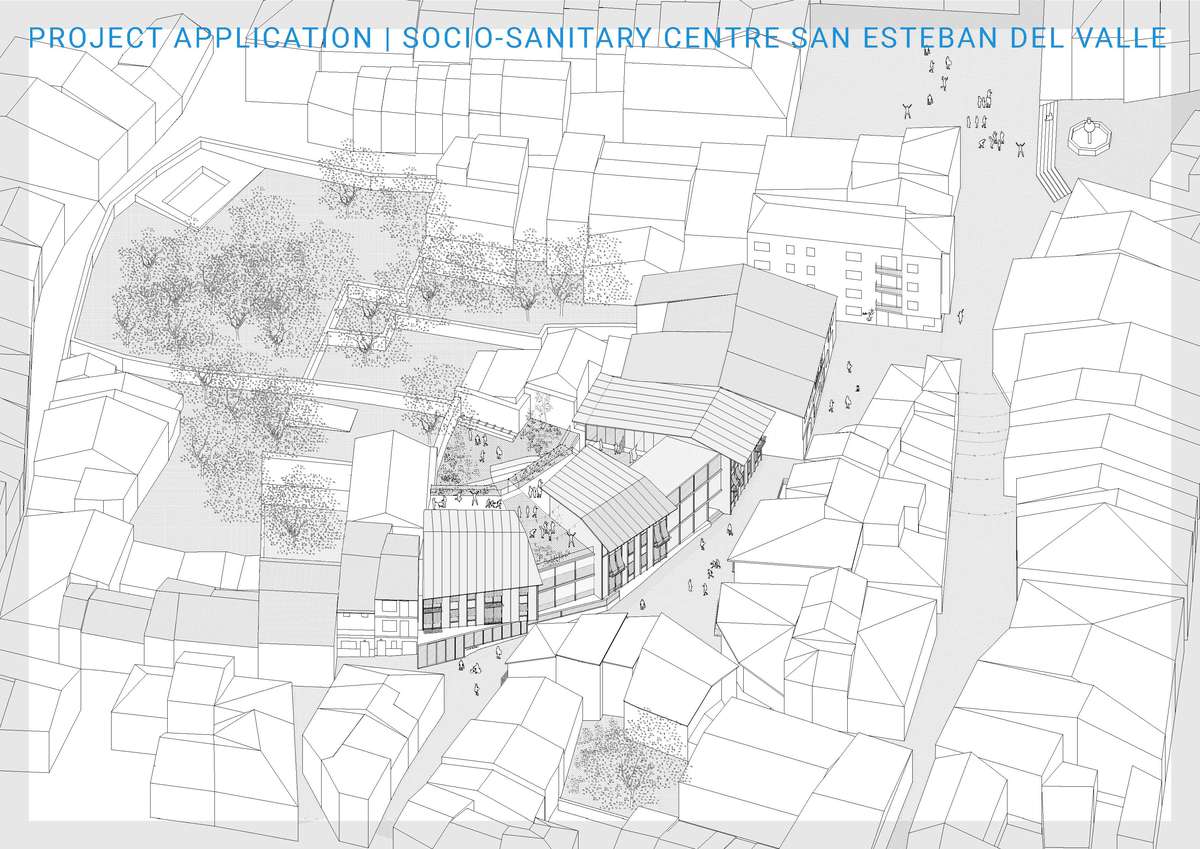
The research has been applied to several architectural competitions, one of which is San Esteban del Valle Socio-Sanitary Centre.
The project is divided into small “houses” which emulate the scale and morphology of the adjacent context, and generate a family environment for a small number of residents. The project is respectful with its urban context, while at the same time implementing cutting-edge technology to provide care, health and services, as well as age friendly and adapted design.
Villages of care
Villages of care

- Site-specific cases
The rural areas of Spain, known as the “emptied Spain”, is made up of small dispersed populations, with the potential for turning them into Care Villages for the elderly. These protective environments can serve to attract population by offering and receiving services.
On the other hand, in the last decade, a number of dementia villages have been built around the world, essentially nursing homes for people suffering from cognitive decline. These projects emulate the architecture of small towns and communities, where residents can live normal -but assisted- lives.
The idea is to make a translation from international to local, from dementia villages to depopulated villages. The first are understood as hyper-designed typologies, a catalogue of ideas and technological solutions which could be implemented into the second.
Care by design helps activate individual memory, while rehabilitating existing rural architecture can also activate collective memory.
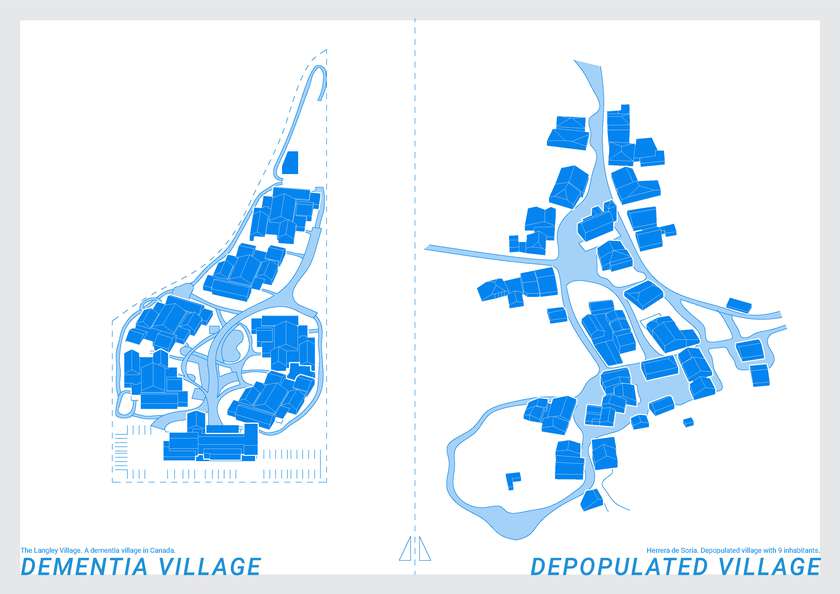
The Village Langley, a dementia village in Canada, is reflected in Herrera de Soria, a depopulated village in Emptied Spain, with a population of nine. It is at a point of irreversible depopulation.
The architecture of these areas is of great interest as the last vestiges of traditional vernacular architecture. The morphology which characterises dementia villages is already there -small groups of houses generate villas, where a limited number of elderly people could live with support.
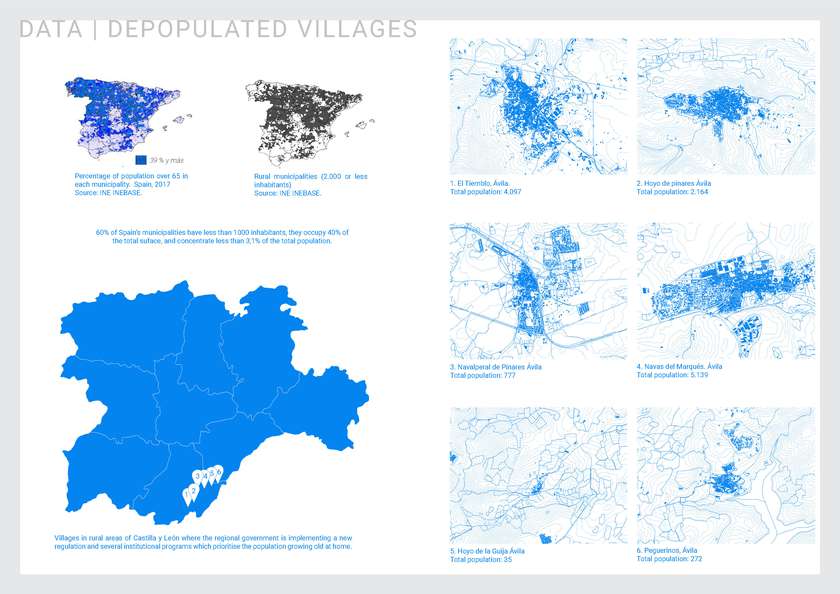
Data. In Spain, the map of depopulated areas, and the map of people over the age of 65 are one and the same.
This research project is centred in the Community of Castilla y León, which has the longest lifespan and oldest population in the country. The regional government is implementing a new regulation and several institutional programs which prioritise the population growing old at home.
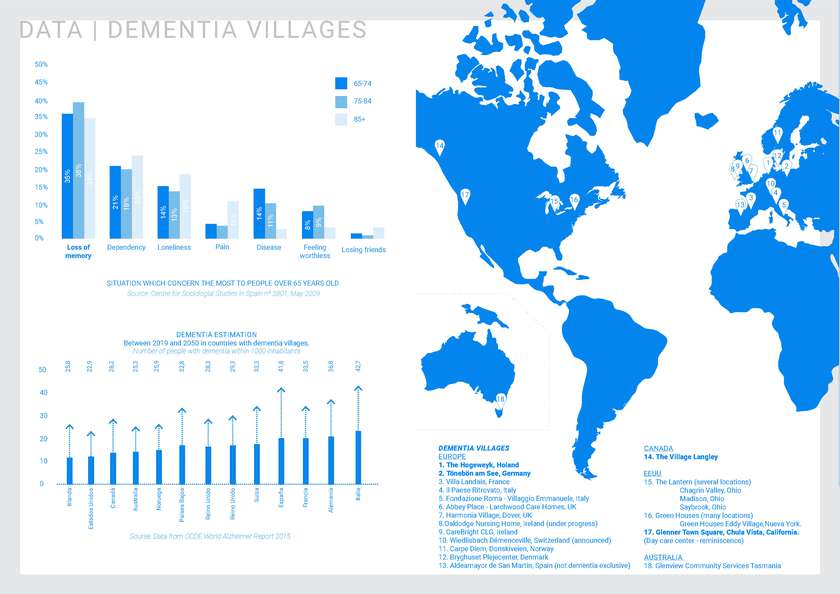
Data. According to the Centre for Sociological Studies in Spain, the loss of memory is the situation which is most concerning to people over 65 years of age. Moreover, the number of people suffering from dementia is growing every year, with a greater impact in those countries with a higher life expectancy. There are at least 13 dementia villages in Europe, and Green Houses in the United States share many characteristics with this new typology.
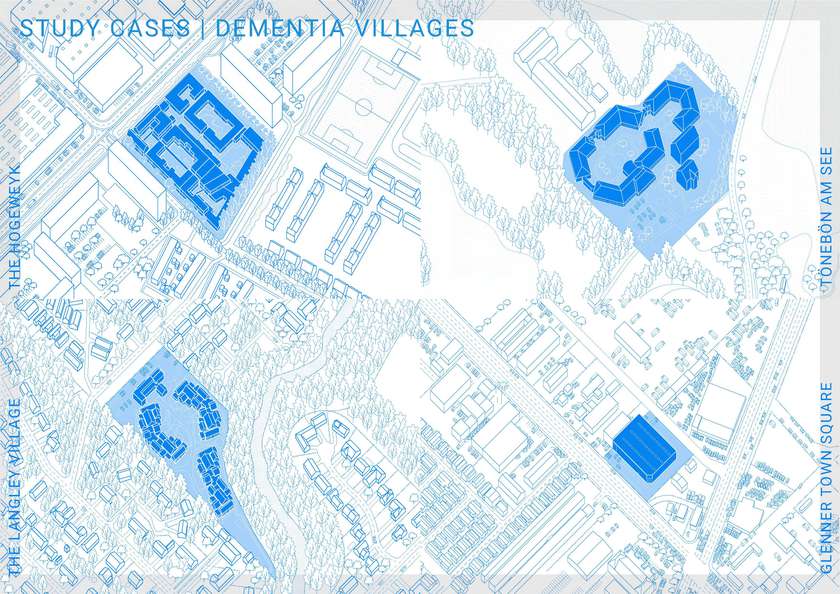
Several dementia villages have been analysed. The Hogeweyk in Holland is the first example of this new typology, which was followed by Tönebön am See, in Germany, or The Langley Village in Canada. On the other hand, the Glenner Alzheimer Centre in California emulates a small Town Square inside an industrial building. The architectural design of each of these projects arises moral questions around gated communities for the elderly and the different design responses according to cultural context.
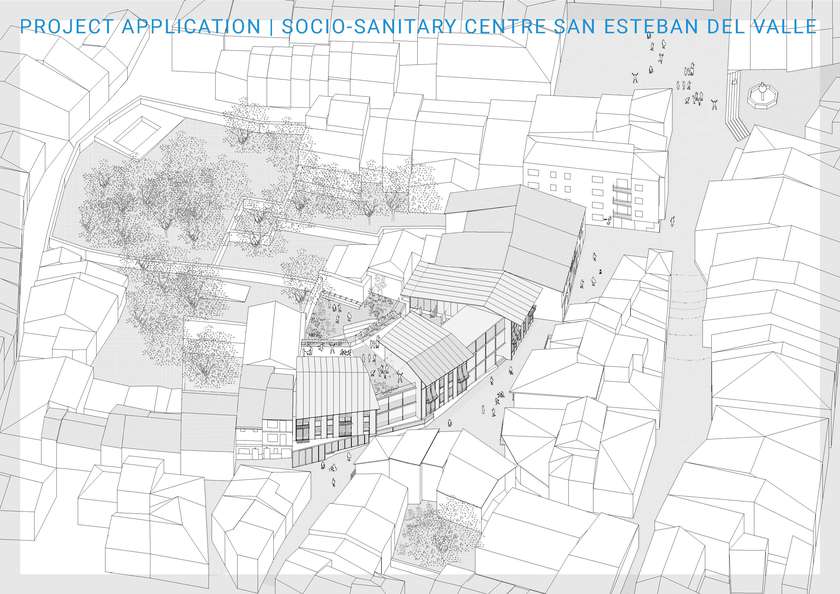
The research has been applied to several architectural competitions, one of which is San Esteban del Valle Socio-Sanitary Centre.
The project is divided into small “houses” which emulate the scale and morphology of the adjacent context, and generate a family environment for a small number of residents. The project is respectful with its urban context, while at the same time implementing cutting-edge technology to provide care, health and services, as well as age friendly and adapted design.